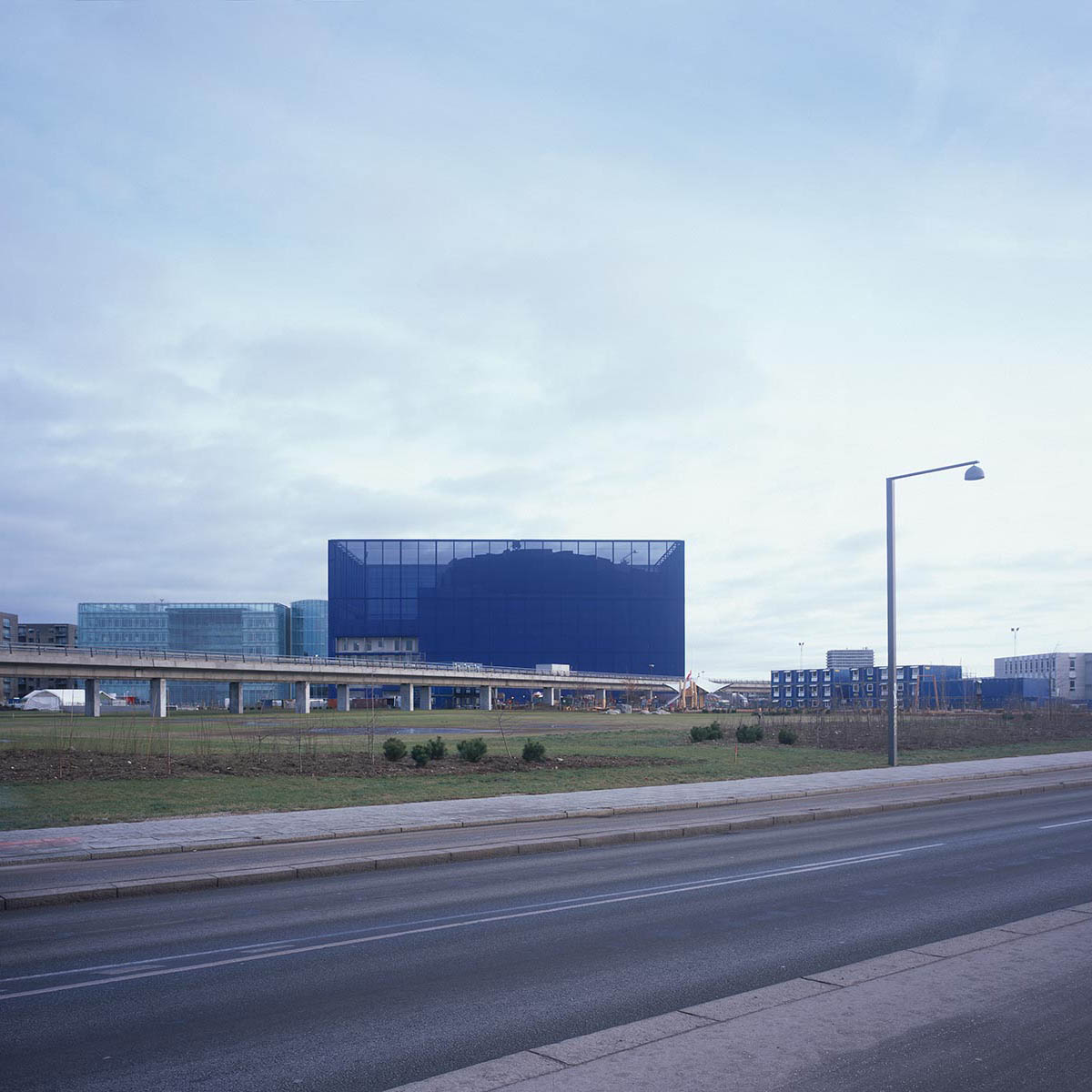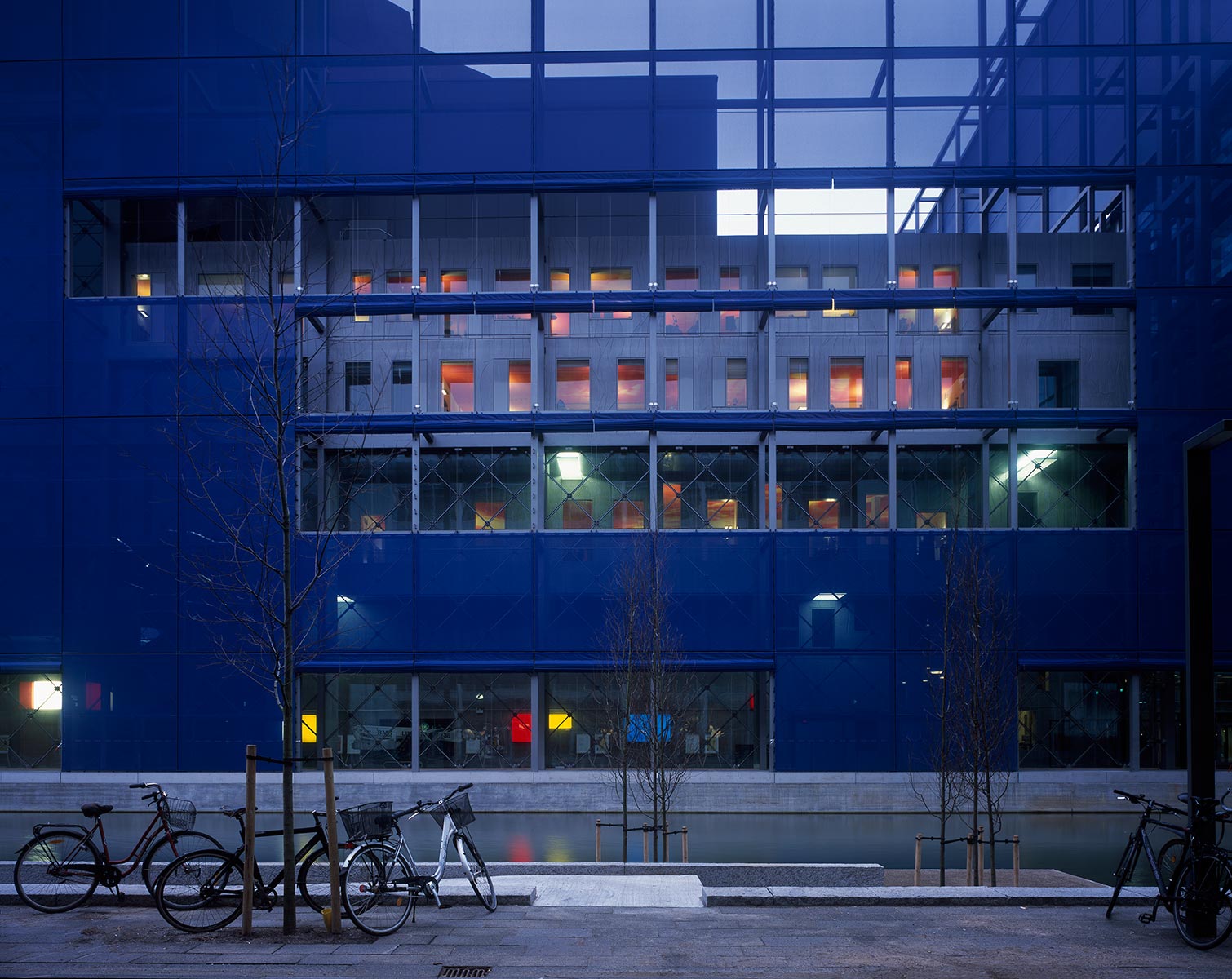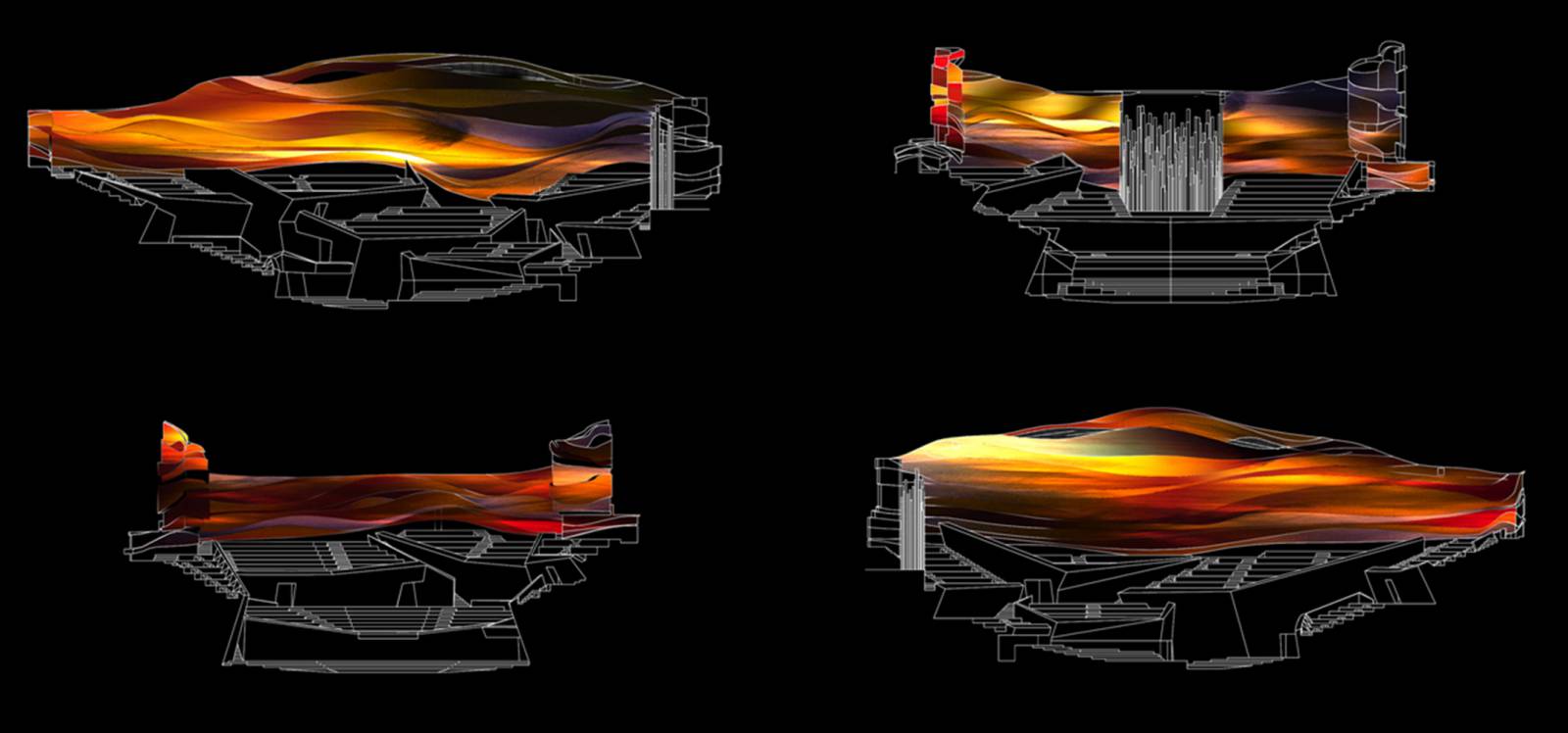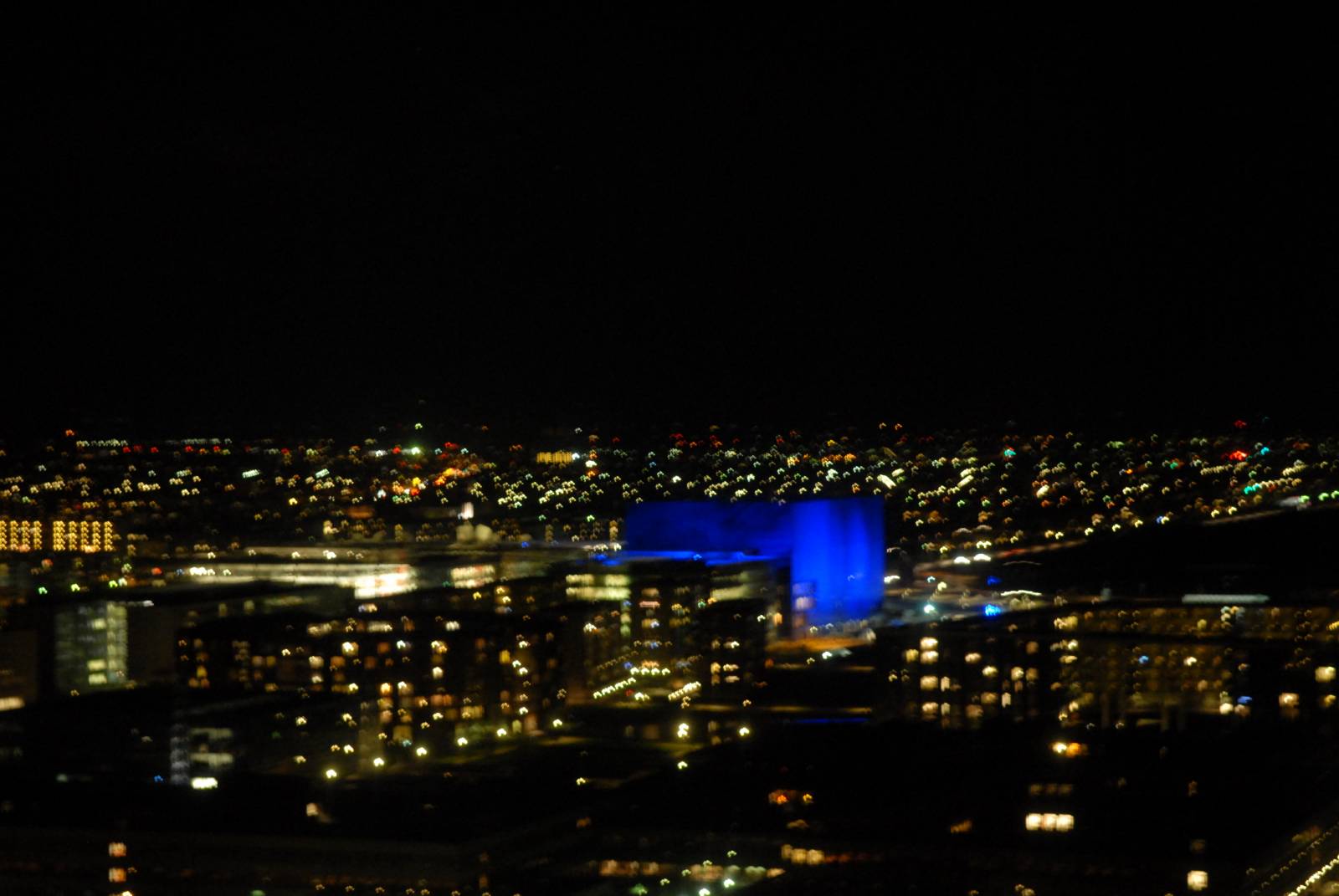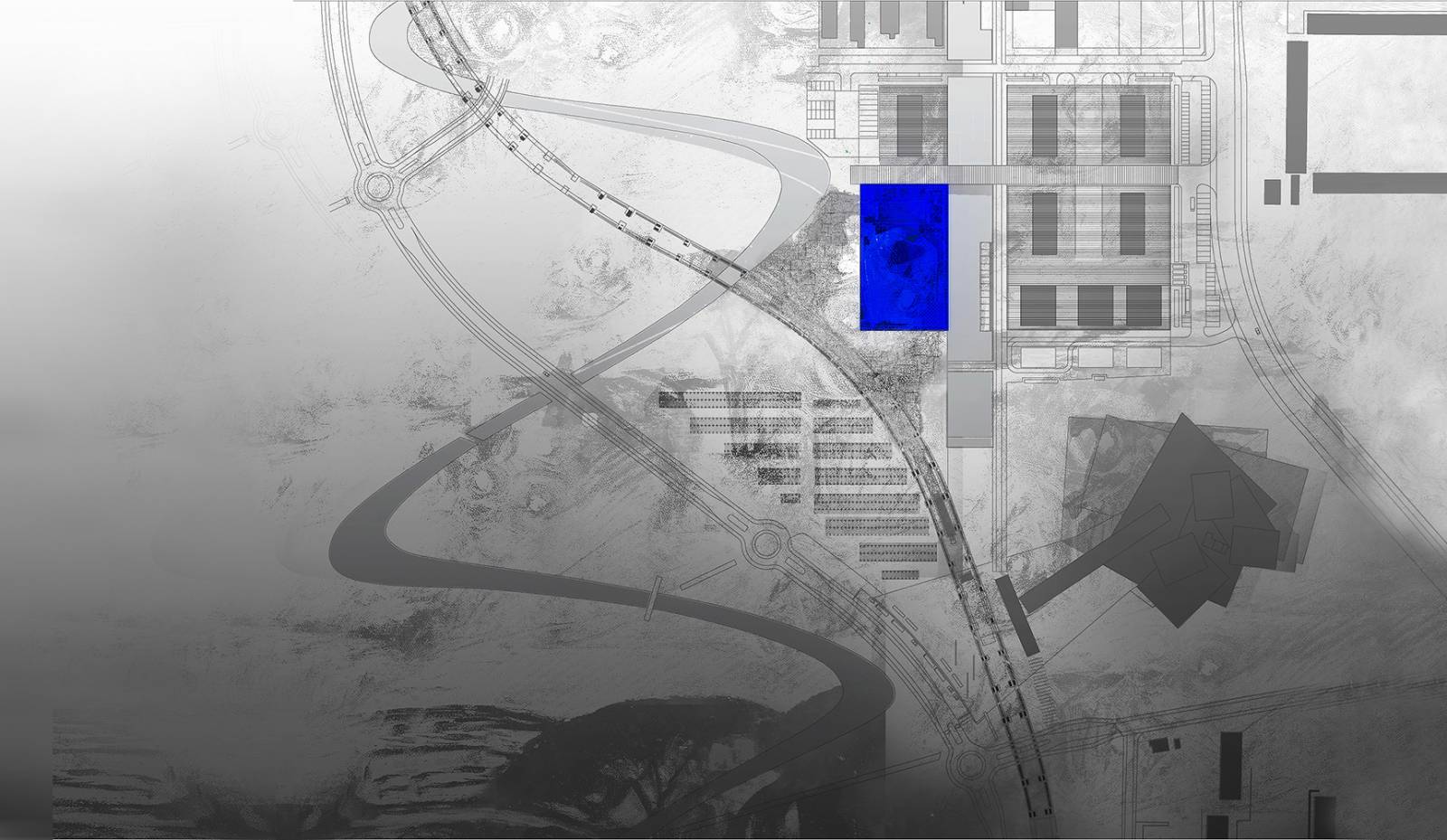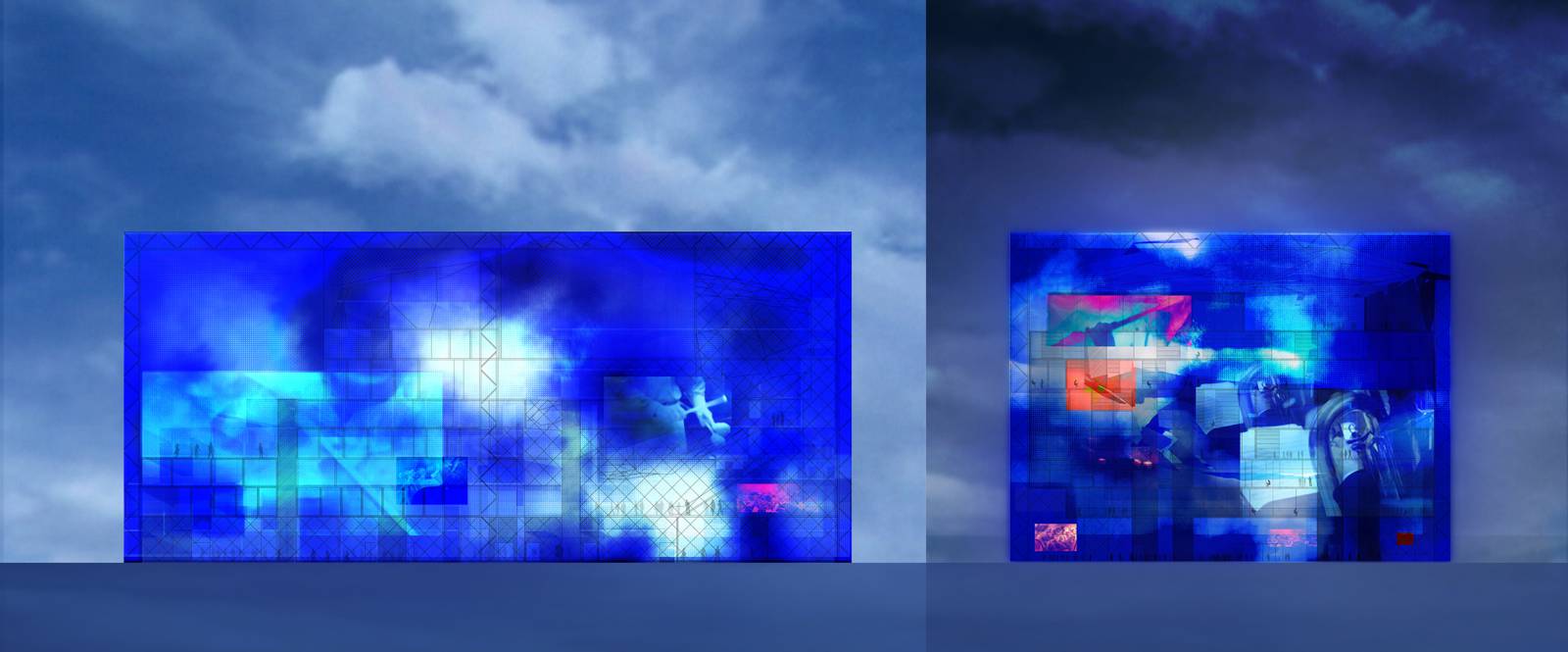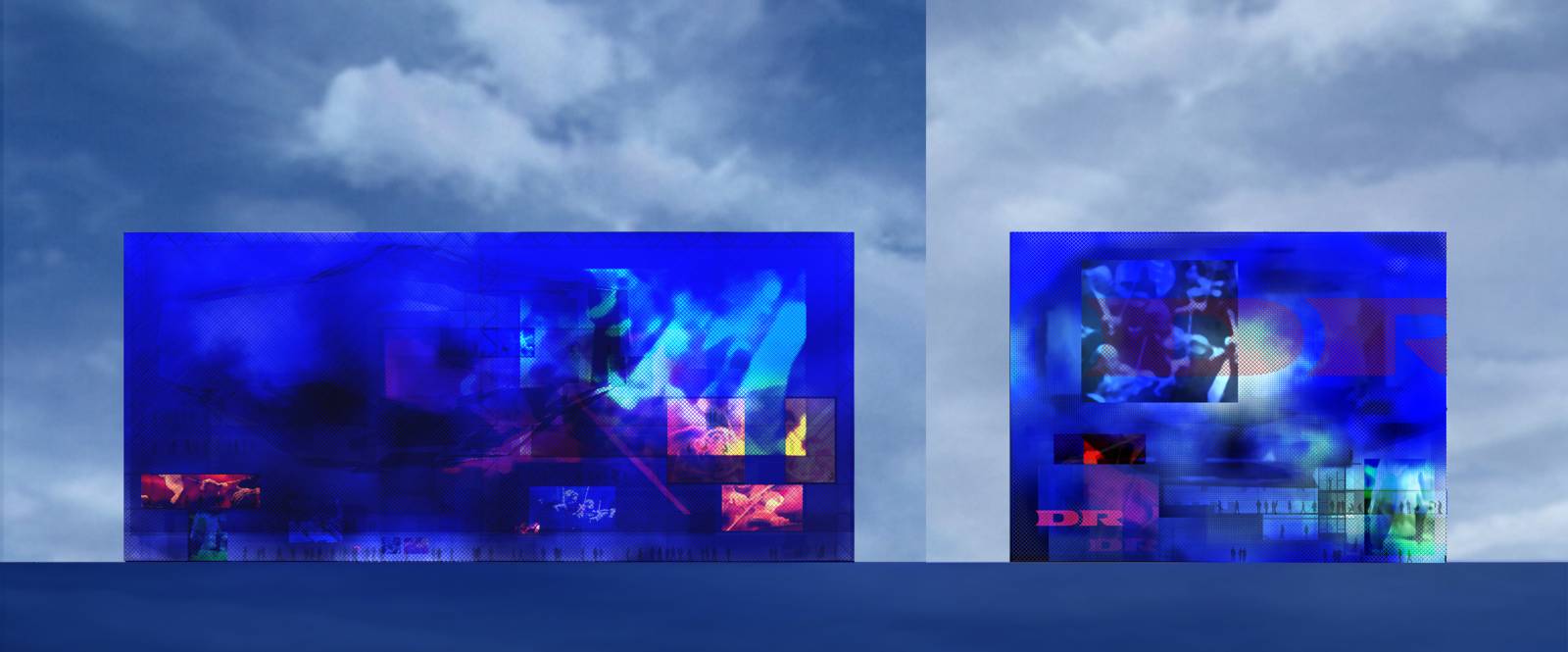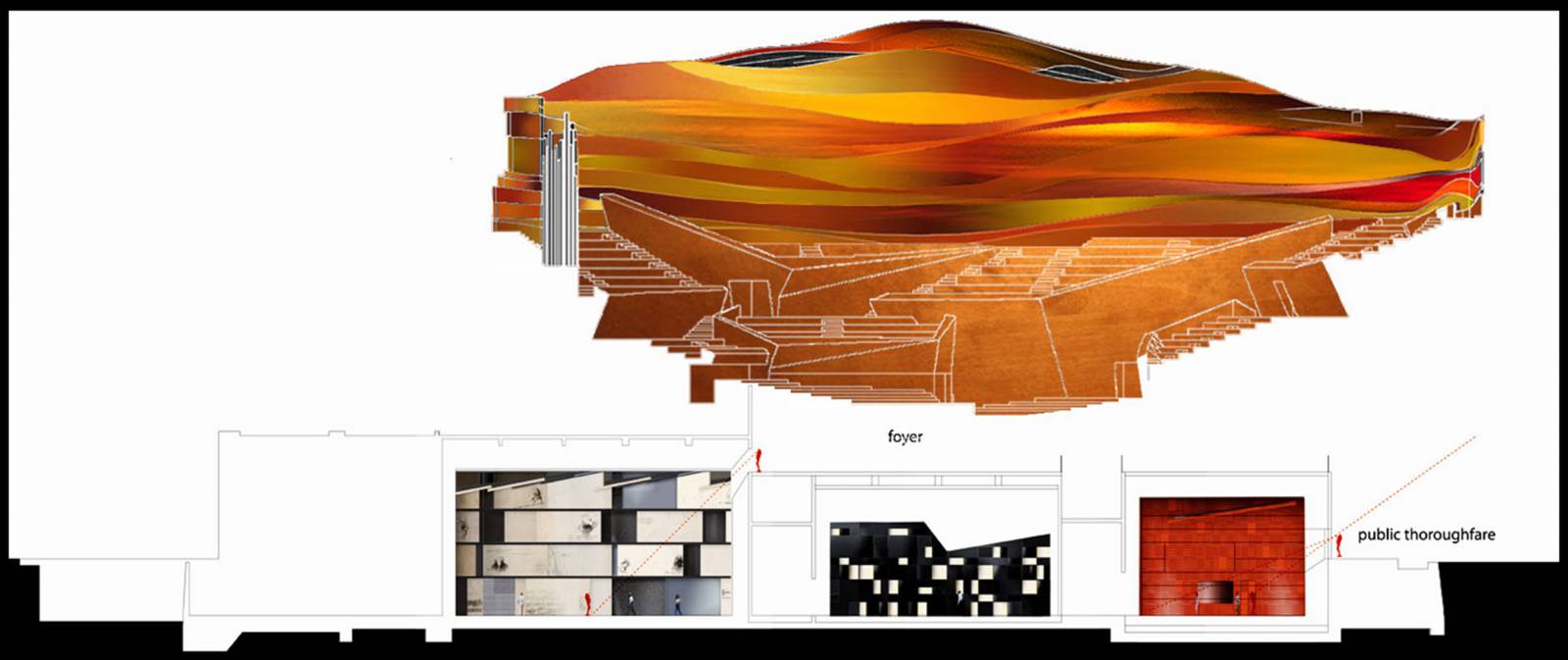Danish Radio Concert House (DR Koncerthuset)
- Copenhagen, Denmark
Architecture is like music…
Building in emerging neighborhoods is a risk that has often proved fatal in recent years. When there is no built environment upon which to found our work, when we cannot evaluate a neighborhood’s future potential, we have to turn the question around: what qualities can we bring to this future? We can respond positively to an uncertainty by using its most positive attribute, that is, mystery. Mystery is never far from seduction. When the surroundings are too neutral we must create a transition, a distance between them, and us, not as a retreat into ourselves, but as a means to establish conditions that will allow a particular territory to blossom. In other words we need to bring value to the context, whatever it may be. For this we must establish a presence, an identity. I propose to materialize the context by creating an exceptional urban building respecting the planned layout of the site. It will be a volume, a mysterious parallelepiped that changes under the light of day and night whose interior can only be guessed at. At night the volume will come alive with images, colors, and lights expressing the life going on inside.
The interior is a world in itself, complex and diversified. An interior street lined with shops follows the path of the urban canal; a restaurant and bar spill into it. The restaurant is dominated by a covered square, a large empty volume beneath the wooden “scales” cladding the concert hall above. It is a world of contrasts and surprises, a labyrinth, an interior landscape. On one side, the world of musicians, with courtyards and exterior terraces, and vegetation. On the other, Piranesian public spaces link together the different performance halls, the restaurant, and the street. The abstract is invaded by the figurative; the permanent is complemented by the ephemeral. The facades are diaphanous filters permitting views of the city, the canal, and the neighboring architecture. At night these facades become screens for projecting images. The architecture asserts itself through details – doors, lighting, ceilings, and staircases – a testimony of respect for the buildings’ visitors, concertgoers, and artists. Each room becomes a discovery, each detail an invention, lessons learned from Theodor Lauritzen and Hans Scharoun whose certain kind of architecture should never be forgotten, and to whom this project is a discrete homage. Architecture is like music; it is made to move and delight us.
Jean Nouvel
